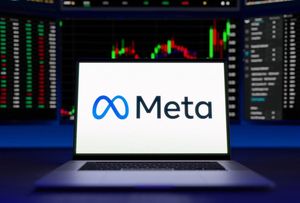TEMECULA, Calif., Aug. 22, 2024 (GLOBE NEWSWIRE) -- “Quiet Vacationing” may be making headlines, but comprehensive new research from Perceptyx, the global leader in employee listening and actioning for a better workplace, reveals that it’s just one outcome of a broader problem: the crumbling divide between work and vacation.
Perceptyx surveyed almost 3,000 employees and found that more than 7 in 10 people work, to some degree, throughout their vacations. Those workers are 2.3x more likely than their peers to have also taken secret vacation days, suggesting that quiet vacations may be an effort by overworked employees to regain some work-life balance.
The company identified three distinct groups of employees:
- 29% are Planned Workationers. This group plans to work while on vacation. They take their devices with them and keep their notifications switched on. People leaders are 1.5x as likely as individual contributors to say they plan to work while on PTO.
- 43% are Unplanned Workationers. They intend to switch off but end up getting sucked in to work regardless. They leave devices behind, switch off notifications, but still respond to messages from their manager and coworkers and check in regularly, most likely from their personal devices. Senior managers (directors, executives and VPs) are the most likely job levels to fall into this category. This group is also disproportionately represented by younger workers who are 2x as likely to say a boss has made them feel guilty for taking time off. Unplanned Workationers are also the group most likely to take vacation without telling their boss (2.6x as likely as True Vacationers and 1.6x as Planned Workationers).
- 28% are True Vacationers.This group successfully disconnects.They leave their devices behind, switch off notifications and don’t respond to messages. Older employees and those without direct people management responsibilities are the most likely to be in this category. Employees in Gen X or older have the support from their peers to take a true vacation, as they are half as likely as their younger counterparts to say team members have made them feel guilty for taking time off.
Why Failure to Disconnect Matters
The majority of workationers (7 in 10) agree that people are much better workers when they take vacation time. Despite that, they aren’t doing it themselves and it’s having serious consequences.
Workationers, both Planned and Unplanned, are more likely to have lower well-being and show more signs of burnout than their True Vacationer peers. But it’s Unplanned Workationers that are the worst off. They are 1.5x as likely as Planned Workationers and nearly twice as likely as True Vacationers to say that stress from work has caused them to regularly behave poorly with friends and family or engage in unhealthy coping behaviors, such as overeating or substance use. Unplanned Workationing also takes a toll on the health of the workers, where they are 1.5x as likely as True Vacationers to have taken more than a week of sick days this year.
“The biggest problem for employers, however, is that their most engaged employees are more likely to work on vacation,” said Emily Killham, Senior Director and Head of the Center for Workforce Transformation at Perceptyx. “That means you’re burning out your most valuable employees. They may be engaged for now, but that won’t last if their well-being is being gradually eroded.”
Why Don’t Employees Take Vacation?
The study shed some light on the drivers of workationing:
| 1. | Manager behavior. The top driver of employee workationing is their manager’s behavior. Planned Workationers (65%) are almost twice as likely as True Vacationers (37%) to say their manager checks email or messages from vacation. Managers’ actions speak louder than words: when employees are encouraged to disconnect, they are 20% more likely to do so. But, when it’s both encouraged and modeled by managers, they are 71% more likely to fully switch off. |
| 2. | Pressure of work. Workationers, both Planned and Unplanned, are 1.6 more likely than True Vacationers to feel nervous asking for time off because work is so busy, suggesting that organizations need to not just encourage time off, but truly make it possible for employees to disconnect periodically. |
| 3. | PTO policy. “Unlimited” PTO policies are sometimes blamed for employees taking less vacation. But Perceptyx data indicates that while people may take more vacation days when their time is “unlimited,” twice as many are working while they are out. |
“The real difference-maker here is manager behavior,” continued Killham. “Our prior research has shown that managers are struggling to reconcile the pressures from above and below. And this new study shows managers are also the group most likely to plan to work while on vacation. That’s why it’s so critical that managers get the support, tools, and training to ensure balance for themselves - otherwise the fallout will trickle through the rest of the organization.”
To learn more about the findings, read the full blog post.
About Perceptyx
Perceptyx is the Employee Experience (EX) transformation company, providing enterprise-grade employee listening, analytics, and behavioral science that activates people and delivers business impact. More than 600 global enterprises, including one-third of the Fortune 100, use Perceptyx’s multi-channel employee listening, AI-powered recommendations, and personalized coaching to close the loop between insights and action. With an unrivaled technology platform and an in-house team of EX Experts, Perceptyx makes it easy for managers, HR executives, and business leaders to align their key business and talent priorities and drive positive organizational change.
About the Center for Workforce Transformation
The Center for Workforce Transformation, operated by Perceptyx, has a mission to educate and inspire executive leaders, managers, and employees through timely, relevant, and actionable insights about the modern work experience. Via original research, media, industry-focused Consortia, peer groups, and exclusive events, the Center is helping to amplify the practices of the world’s leading organizations — driving leader and workforce transformation at speed, at scale, and in sustainable ways.
Media Contact:
Brianna Bruinsma
Firebrand Communications
perceptyx@firebrand.marketing
415 848 9175






